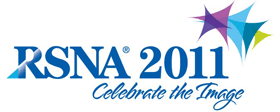
Abstract Archives of the RSNA, 2011
SST14-01
The Efficacy of Ultrasound-guided Percutaneous Cholecysto-Cholangiography for the Early Exclusion and Type Determination of Biliary Atresia
Scientific Formal (Paper) Presentations
Presented on December 2, 2011
Presented as part of SST14: Pediatrics (Interventional)
Sang Yub Lee, Presenter: Nothing to Disclose
Gab Chul Kim, Abstract Co-Author: Nothing to Disclose
Yun-Jin Jang, Abstract Co-Author: Nothing to Disclose
Hye Jung Kim, Abstract Co-Author: Nothing to Disclose
Hun Kyu Ryeom, Abstract Co-Author: Nothing to Disclose
Jin Young Park, Abstract Co-Author: Nothing to Disclose
Seung Man Cho, Abstract Co-Author: Nothing to Disclose
Byung-Ho Choe, Abstract Co-Author: Nothing to Disclose
To evaluate the efficacy of ultrasound-guided percutaneous cholecysto-cholangiography (PCC) for early exclusion and type determination of biliary atresia (BA) in patients of neonatal cholestatic liver disease, and to introduce successful assessment of the neonatal biliary tract.
From October 2003 to August 2010, twenty two infants were consulted to department of radiology for PCC to evaluate neonatal cholestasis who could not be excluded from BA. Ultrasound-guided PCC were applied to 21 patients.
Among eighteen patients who underwent PCC, thirteen patients were excluded from biliary atresia by contrast filling observed in the gallbladder, intra and extra biliary system, and passage to the duodenum. Final diagnosis was total parenteral nutrition associated cholestasis (TPNAC) (n = 6), neonatal hepatitis (n = 4), congenital syphilis (n = 1), neonatal lupus (n = 1), and congenital CMV hepatitis (n = 1). Five other patients were diagnosed as BA, four were type IIIb and other one was type IIIa BA by PCC finding, which were confirmed by surgery. There were no complications related to PCC. Four infants in whom US guided biliary puncture was failed were diagnosed with BA (n = 2) and TPNAC (n = 2).
Utlasound-guided percutaneous cholecysto-cholangiography is a useful and safe technique for early exclusion of biliary atresia when BA could not be ruled out after traditional screening tests. And it could be useful for preoperative type determination of BA unless failed puncture of gallbladder.
In our study, PCC could reduce up to 72% of unnecessary open laparoscopic cholangiography. And it could be helpful preoperative determination of BA subtype.
Lee, S,
Kim, G,
Jang, Y,
Kim, H,
Ryeom, H,
Park, J,
Cho, S,
Choe, B,
The Efficacy of Ultrasound-guided Percutaneous Cholecysto-Cholangiography for the Early Exclusion and Type Determination of Biliary Atresia. Radiological Society of North America 2011 Scientific Assembly and Annual Meeting, November 26 - December 2, 2011 ,Chicago IL.
http://archive.rsna.org/2011/11005036.html

